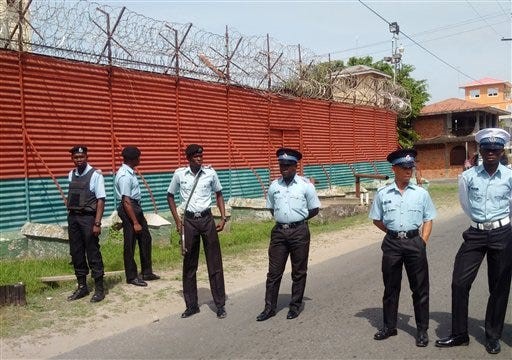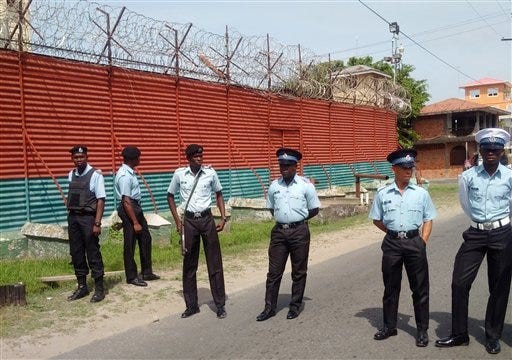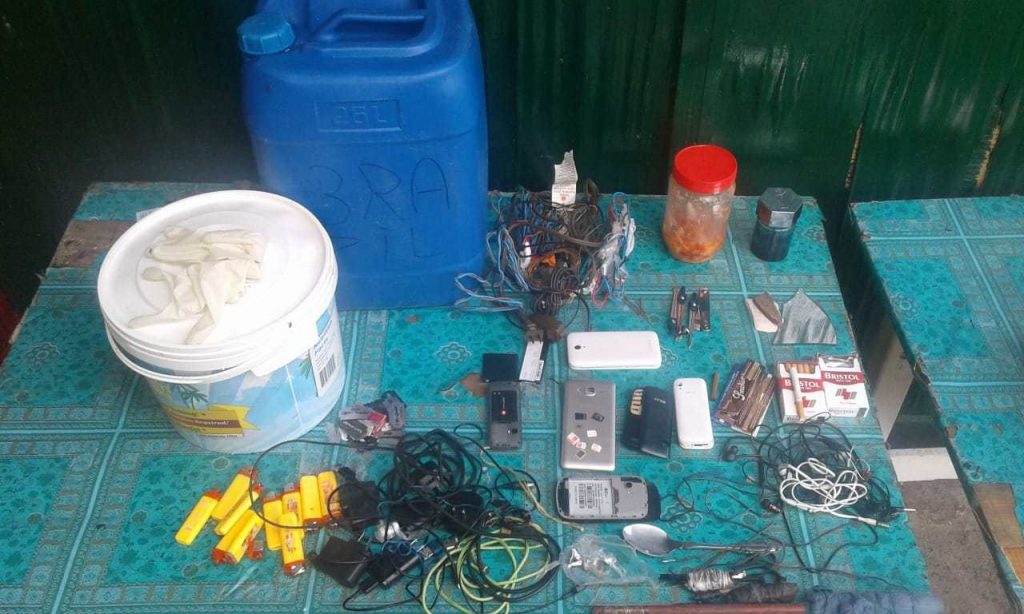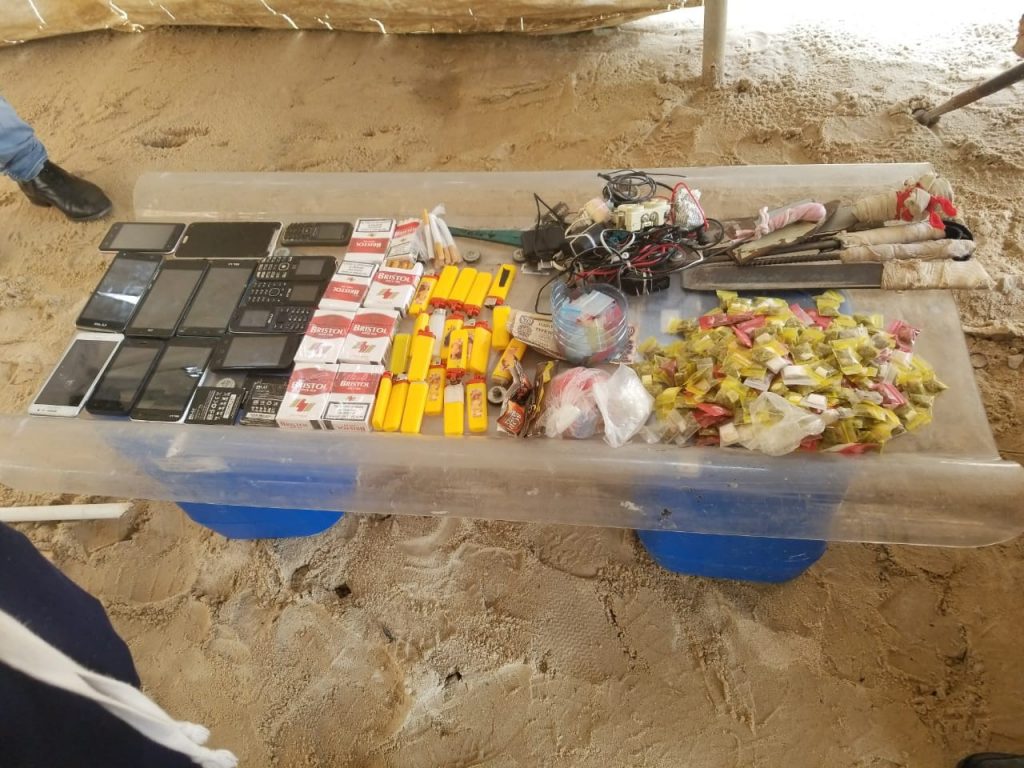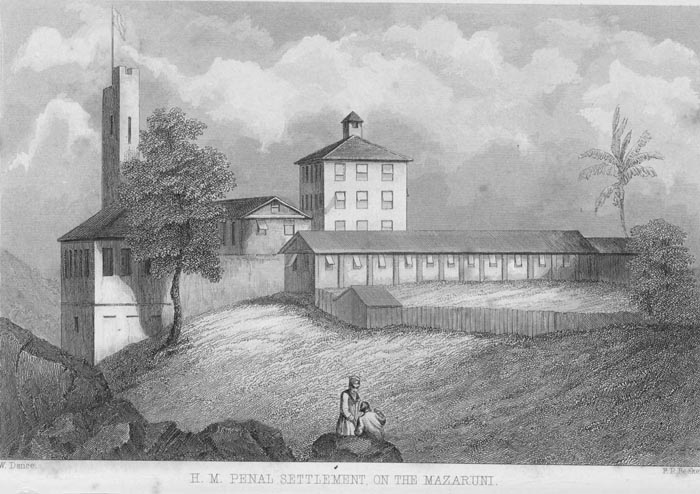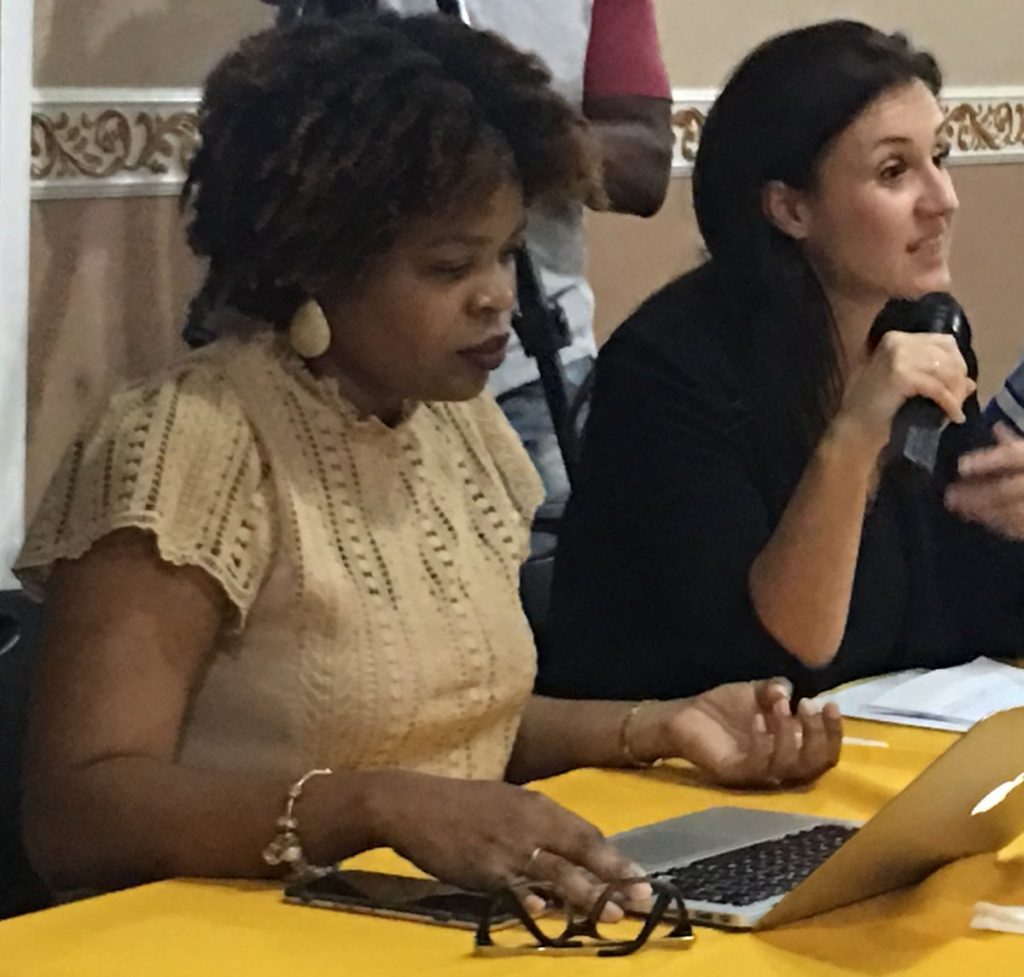Traditionally Guyana’s approach to drugs has been punitive, with imprisonment being used as a tool to eradicate drug use and supply, which includes cannabis. Cannabis users in Guyana still face a mandatory prison sentence of three years for the possession of one joint (a cannabis cigarette). However, this policy has failed and like many other countries, Guyana is proposing to remove custodial sentences for small amounts of cannabis (30 grams or less). Last year the government made the first steps towards changing the law by drafting amendments to the Narcotics Drug and Psychotropic Substances (Control) (Amendment) Bill 2015. Although nothing has changed yet, and the possession of cannabis remains illegal, the proposed changes show that Guyana is moving with international opinion and implementing similar practices as those adopted in other countries, including those in the Caribbean. The implementation of a prison sentence for personal use of cannabis has been described as excessive and disproportionate and has been shown to have a negative impact on the life chances, travel and future careers of those prosecuted and imprisoned under these laws. Therefore, this blog focuses on some of the issues at stake in the shift in Guyana towards a less punitive and more rehabilitative treatment orientated approach to substance use, particularly in relation to cannabis.
Substance use in Guyana has been identified as a problem in the National Mental Health Action Plan (NMHAP) and the National Drug Strategy Master Plan 2016-2020 (NDSMP). Both include the use of legal substances like alcohol, tobacco and prescription medications alongside illegal substances like cannabis, cocaine and ecstasy. It is acknowledged that in Guyana, there is a need to better understand the use of substances and address the number of shortfalls in responding to substance use. These include inadequate service provision, inter-sectorial and multi-agency collaboration; inadequate treatment and rehabilitative facilities; and insufficiently trained personnel. As with most other countries the substances most widely used in Guyana are alcohol and cannabis. These are the most popular substances among the general population but also among those with more problematic patterns of substance use/dependence like prisoners and/or those accessing drug treatment. Cannabis use has been linked with psychosis and mental ill-health in Guyana, while evidence has shown that alcohol plays a prominent role in suicide, which has also been identified as a public health issue in Guyana (see Halliwell, 2019). Alongside cannabis and alcohol, cocaine and its derivatives, particularly crack, are also prevalent among those with more problematic patterns of substance use/dependence. However, it is cannabis, rather than other narcotic substances that dominates the Guyanese statistics and has been subject to much scrutiny over the last decade.
Like many other countries across the globe the legal status of and laws on cannabis have been subject to much criticism, protest and debate in Guyana; a country where a minimum mandatory sentence of three years imprisonment is still imposed for possession of a small quantity of the drug. In fact, the laws prohibiting drugs in Guyana and other Caribbean countries, particularly pertaining to cannabis, have been described as draconian, ‘ineffective, incongruous, obsolete and deeply unjust’ (CARICOM, 2018). This is largely due to the disproportionate sentences imposed in Guyana for the possession of small amounts of cannabis for personal use (5 grams) and the low thresholds utilised for the presumption of drug trafficking (15 grams) in a country where cannabis is grown and used by approximately 5% of the population every year.
Cannabis is widely used across the Commonwealth Caribbean and throughout history has been used culturally, religiously and medicinally around the globe. Despite many of these cultural and religious practices originating in Asia, the use of cannabis also has a long history among Caribbean peoples and countries, including in Guyana (formerly British Guiana). The production, use and prohibition of cannabis in British Guiana was intertwined with the history of colonialism, enslavement and immigration. In fact, cannabis was introduced to Guyana post-emancipation by East Indian indentured labourers (CARICOM, 2018). Much of the early legislation passed to control cannabis in British Guiana – the 1861 Ordinance to Regulate the Sale of Opium and Bhang (an edible form of cannabis that is also an integral part of Hindu rituals and festivals) and the 1913 Indian Hemp Ordinance of British Guiana – can be attributed to the cultural practices of Indian indentured labourers, and the implementation of international treaties that deemed cannabis a dangerous drug, despite persuasive evidence suggesting the contrary. The role of cannabis in religious practices among Caribbean peoples, particularly among Rastafarians, is also well documented. It is also the Rastafarian community who have been fighting for cannabis law reform in Guyana. They regard cannabis as a holy herb, a gift from God that has medicinal and spiritual benefits and believe they should be exempt from the laws prohibiting it. Cannabis laws have been shown to disproportionately affect poor, minority communities that are marginalised, particularly when it comes to the offence of drug possession and trafficking.
There are high levels of incarceration for drug offences in Guyana. In 2017, the majority of individuals charged and convicted with drug possession by Guyanese authorities were for cannabis (93% and 90% respectively), with just under a fifth (18%) of these people being under the age of 18 years old. The majority of those charged (88%) and convicted (81%) of drug trafficking was also for cannabis. In fact, drug offences (both possession and supply) are the second most prevalent crime for which prisoners are arrested for in Guyana, after intentional homicide or murder. This is particularly true for females; despite comprising less than 5% of the prison population, the majority of women in Guyana are incarcerated for drug offences (54%), particularly for drug trafficking (GUYDIN, 2017; Sarsfield and Bergman, 2017). In fact, just under a quarter (21.3%) of all prisoners are in prison for drug possession or trafficking, and drug offenders have the third highest recidivism rate (21.6%). Thus, drug offences, which mostly relate to cannabis, are contributing to an already overwhelmed, overstretched and under resourced prison system (USDS, 2019). The issue of non-custodial sentences for the possession of cannabis and its subsequent overcrowding were factors that led to the 2017 fire started by prisoners in Georgetown Prison, which killed 17 prisoners (see Ifill, 2019).
Not only are a significant proportion of the prison population incarcerated for drug offences, prisoners in Guyana tend to have higher rate of substance use than the general population. Just over a fifth (22.7%) of prisoners in Guyana admitted to using alcohol and/or drugs in the last month while in prison, with the majority using cannabis (84%) and alcohol (33%) (Sarsfield and Bergman, 2017); substance use was found to be highest among those held in Lusignan (44%) and Timehri (42%) prisons. Despite being rife in prison, drugs have a negative impact on both staff and prisoners. The use and supply of drugs in prison, and the debts arising from the drug trade contribute to high levels of violence, corruption, intimidation, self-harm and mental ill-health. While drugs are brought in by prisoners and their families, prison officers are also reported to supply drugs and other contraband to prisoners (see Ifill 2019). In fact, last year, Guyana’s Prison Service (GPS) confiscated 12.81 kilograms of cannabis indicating the problem of maintaining the levels of security necessary to stop drugs entering Guyana’s prisons. There has also been a move by GPS towards a more rehabilitative approach that proposes more drug treatment for prisoners. However, there are a number of limitations delaying the implementation of drug treatment provision across Guyana’s prisons (e.g., the infrastructure, limited resources and inadequately trained personnel). Currently, the Drug Demand Reduction Unit of the Ministry of Public Health has drug and alcohol counselling programmes in the Timehri, Mazaruni and New Amsterdam, Female prison. There have also been steps taken to look at alternatives to incarceration for drug dependent, nonviolent offenders in Guyana in line with United Nations Special Session on Drugs Outcome Document and the US-sponsored CND resolution (2016). As a consequence, Guyana is piloting a Drug Treatment Court in Georgetown, which aims to divert drug users out of the criminal justice system and into treatment, which has been outlined in the new drug strategy for Guyana.
In fact, the new Guyanese National Drug Strategy Master Plan (NDSMP) 2016-2020 was ‘triggered by the need to bring it in line with most recent national and international dynamics of the drug problem and built on Guyana’s previous drug strategies (NDSMP 2005-2009 and NDSMP 2014-2018). The plan outlines national drug policy, identifies key priorities, assigns responsibilities and delineates the operational plans of each government department involved in implementing the NDSMP, which will be overseen by National Anti-Narcotics Agency (NANA) that was established in 2017.

The new strategy emphasises a holistic Public Health approach and the Guyanese government are putting measures in place to improve the provision of drug treatment at all levels of the healthcare system. Substance use in Guyana is largely dealt with by utilising a public-private, holistic multi-agency approach to drug prevention and treatment, although fostering a rehabilitative culture in prison is also a part of the drug strategy. Currently the Georgetown Public Hospital, Psychiatric Unit provides outpatient treatment services, the Ministry of Education delivers drug education in schools, while two NGOs (Phoenix Recovery Project and the Salvation Army Men’s Centre) provide inpatient treatment for substance use, which utilise the 12-step model; in fact, in the new drug strategy the Phoenix Recovery Project and the Salvation Army will get a subvention to aid in carrying out their services and increase capacity. Substance users are not only detained in Guyana’s prisons but also in the National Psychiatric Hospital, which is used to treat those suffering from substance induced psychosis and other substance related mental health issues. Last year, two-thirds of the 180 in-patients at the National Psychiatric Hospital were suffering from substance induced psychosis, with nearly three-quarters of these identifying as cannabis users. This has led to concerns being raised about the removal of custodial sentences for cannabis possession by some of the country’s psychologists working in this area.

NANA in Guyana (Photograph: Martin Halliwell)
While the legal status of cannabis remains under debate in Guyana and the piloting of Drug Treatment Courts gets underway, the Guyanese government have made it clear they are not ready to legalise or decriminalise cannabis as recommended by the CARICOM Commission on Marijuana (CARICOM, 2018). Although some might argue the proposed initiatives do not go far enough, the removal of custodial sentences for small amounts of cannabis will mean fewer people are being sent to prison for non-violent drug related offences imposed by laws that have been described as ‘draconian’ ‘discriminatory’ and ‘outdated’. It will also help to alleviate the overcrowding currently experienced in Guyana’s prisons and the subsequent inhumane conditions that arise from said overcrowding (see Ifill, 2019). However, these amendments have been with the National Assembly for years with little progress being made either way to solve the current cannabis conundrum. Although the new drug strategy proposes ‘offering treatment, rehabilitation, social reinsertion and recovery support services to drug-dependent criminal offenders as an alternative to criminal prosecution and imprisonment’, this approach is extremely costly. To treat someone at the Phoenix Recovery Project costs $60,000 a month compared to the $27,884 – $40,416 a month it costs to keep someone in prison without access to sufficient rehabilitative services and reintegration programmes, which also has an impact on reducing recidivism and relapse. Despite the new rehabilitative focus proposed by the new policy, treatment resources for drug use remain limited and costly. Therefore, if Guyana is to successfully achieve the aims set out in the current drug strategy these initiatives will not only need adequate funding, but also infrastructure, resources, staff and political support. Although drug courts are not without their criticisms, they pose a potentially preferable alternative to a custodial sentence in Guyana’s already over stretched prison system, which has been described as ‘harsh and potentially life threatening’ (USDS, 2017). Even though the debate surrounding the legal status of cannabis in Guyana continues and there is no clear indication if the custodial sentences will be removed for possession, while we await the results on the impact from the piloting of Drug Treatment Courts, there is clearly a new era in drugs policy emerging in the nation today.
Tammy Ayres is a Lecturer in the School of Criminology, University of Leicester, UK.
The author would like to thank Tiffany Barry (Head of Guyana Drug Information Network and NANA) for her comments and input on an earlier draft of this blog.

